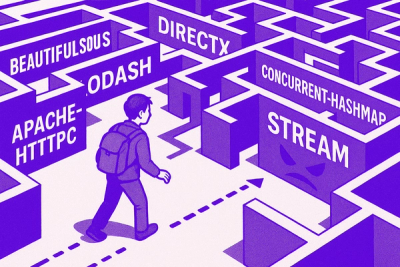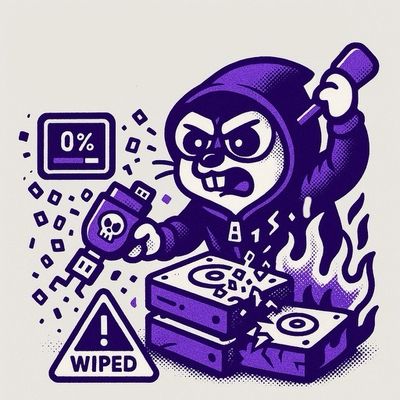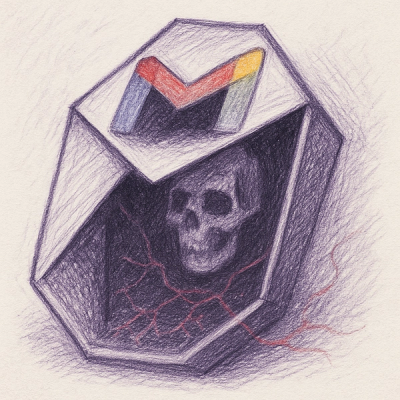
Research
NPM targeted by malware campaign mimicking familiar library names
Socket uncovered npm malware campaign mimicking popular Node.js libraries and packages from other ecosystems; packages steal data and execute remote code.
Aspose.OMR for .NET adds optical mark recognition (OMR) functionality to your C#, VB.NET, and ASP.NET applications. With it, you can design, render and recognize all types of hand-filled forms: answer sheets, examination papers, surveys, questionnaires, ballots, applications, and many more. No specialized equipment, consumables and third-party software required. Use your office copier or even a smartphone camera instead of an expensive OMR scanner. Respondents can fill out your forms with a pen, pencil or marker and use any type of marks - artificial intelligence and advanced accuracy calibration ensure reliable results. You can even recognize rotated and skewed images. Aspose.OMR for .NET can recognize any file you get from a scanner or camera: PDF, JPEG, PNG, TIFF, GIF, and BMP. Recognition results are returned in the most popular data storage formats (JSON, XML and CSV) that can be imported into any popular database, CRM or analysis system. Aspose.OMR for .NET supports QR codes and barcodes recognition. Aspose.OMR for .NET offers a flexible markup language for designing OMR forms of any layout and complexity; you can even add QR codes, barcodes and images without using third-party libraries. All popular paper sizes as well as a number of non-standard ones are supported. Forms are saved in multiple file formats, intelligently selected based on the provided extension: PDF, JPEG, PNG, TIFF, GIF, and BMP. Aspose.OMR for .NET is written in C#, has managed code, and supports both x86 and x64 systems. Changelog: - Improved the recognition accuracy of OMR forms images that have been resized or affected by perspective distortions. - Resolved "Failed to find matching between the template and the image!" exception. Check for details at https://releases.aspose.com/omr/net/release-notes/2024/aspose-omr-for-net-24-12-0-release-notes/ Resources: Online documentation: https://docs.aspose.com/omr/net/ Free support forum: https://forum.aspose.com/c/omr/

Overview | Documentation | API Reference | Online apps | Showcases | Blog | Free support | Temporary license
This package can be used to develop applications for on-premise operating systems and cloud platforms. You can build both 32-bit and 64-bit software, including ASP.NET, WCF, and WinForms.
Please note: our library implies the use of .NET programming languages, compatible with CLI infrastructure. If you require a corresponding native library for C++, you can download it from here.
Aspose.OMR for .NET can generate and recognize hand-filled answer sheets, surveys, applications, and similar machine-readable forms. With it, you can quickly develop on-premise and web-based .NET applications for optical mark recognition (OMR) that work without specialized hardware. Respondents can fill out your forms with a pen or pencil and use any type of marks - we guarantee reliable results.
Aspose.OMR for .NET offers several ways to design OMR forms of any layout and complexity. They all work equally well and produce the same results - just choose the approach that you are most comfortable with.
Aspose.OMR for .NET can generate machine-readable forms in all popular formats. The format is intellectually selected based on the provided extension:
Aspose.OMR for .NET can read just about any image that you get from a scanner or camera:
Recognition results are returned in the most popular document and data exchange formats:
You can get familiar with Aspose.OMR for .NET by creating 2 minimal console applications for creating and recognizing machine-readable forms.
Create a new C# project in Visual Studio. You can use a very basic project template, such as Console App.
Install this NuGet package to the project.
Create a simple questionnaire in a plain-text file that uses a special notation. Save the file to bin\Debug directory of the project under the name template.txt.
?text=Hello, World!
font_style=bold
font_size=24
align=center
#How are you doing today?
() Pretty good, thanks! () I won't respond until I see my lawyer.
Create an instance of Aspose.OMR.Api.OmrEngine class:
Aspose.OMR.Api.OmrEngine omrEngine = new Aspose.OMR.Api.OmrEngine();
Generate a form from the template source file:
Aspose.OMR.Generation.GenerationResult generationResult = omrEngine.GenerateTemplate("template.txt");
Save the result:
generationResult.Save("", "Hello.OMR");
Full code:
namespace HelloOMR
{
internal class Program
{
static void Main(string[] args)
{
Aspose.OMR.Api.OmrEngine omrEngine = new Aspose.OMR.Api.OmrEngine();
Aspose.OMR.Generation.GenerationResult generationResult = omrEngine.GenerateTemplate("template.txt");
generationResult.Save("", "Hello.OMR");
}
}
}
Now run the program. You should get 2 files in bin\Debug directory of the project:
Aspose.OMR.Api.OmrEngine omrEngine = new Aspose.OMR.Api.OmrEngine();
Aspose.OMR.Api.TemplateProcessor templateProcessor = omrEngine.GetTemplateProcessor("Hello.OMR.omr");
Aspose.OMR.Model.RecognitionResult recognitionResult = templateProcessor.RecognizeImage("IMG_20220401.jpg");
string result = recognitionResult.GetCsv();
Console.WriteLine(result);
Full code:
using System;
namespace HelloOMR
{
internal class Program
{
static void Main(string[] args)
{
Aspose.OMR.Api.OmrEngine omrEngine = new Aspose.OMR.Api.OmrEngine();
Aspose.OMR.Api.TemplateProcessor templateProcessor = omrEngine.GetTemplateProcessor("Hello.OMR.omr");
Aspose.OMR.Model.RecognitionResult recognitionResult = templateProcessor.RecognizeImage("IMG_20220401.jpg");
string result = recognitionResult.GetCsv();
Console.WriteLine(result);
Console.ReadLine();
}
}
}
Now run the program. You should see results of the recognition in the console output:
Element Name,Value,
Question1,"{Answer bubble letter}"
FAQs
Aspose.OMR for .NET adds optical mark recognition (OMR) functionality to your C#, VB.NET, and ASP.NET applications. With it, you can design, render and recognize all types of hand-filled forms: answer sheets, examination papers, surveys, questionnaires, ballots, applications, and many more. No specialized equipment, consumables and third-party software required. Use your office copier or even a smartphone camera instead of an expensive OMR scanner. Respondents can fill out your forms with a pen, pencil or marker and use any type of marks - artificial intelligence and advanced accuracy calibration ensure reliable results. You can even recognize rotated and skewed images. Aspose.OMR for .NET can recognize any file you get from a scanner or camera: PDF, JPEG, PNG, TIFF, GIF, and BMP. Recognition results are returned in the most popular data storage formats (JSON, XML and CSV) that can be imported into any popular database, CRM or analysis system. Aspose.OMR for .NET supports QR codes and barcodes recognition. Aspose.OMR for .NET offers a flexible markup language for designing OMR forms of any layout and complexity; you can even add QR codes, barcodes and images without using third-party libraries. All popular paper sizes as well as a number of non-standard ones are supported. Forms are saved in multiple file formats, intelligently selected based on the provided extension: PDF, JPEG, PNG, TIFF, GIF, and BMP. Aspose.OMR for .NET is written in C#, has managed code, and supports both x86 and x64 systems. Changelog: - Improved the recognition accuracy of OMR forms images that have been resized or affected by perspective distortions. - Resolved "Failed to find matching between the template and the image!" exception. Check for details at https://releases.aspose.com/omr/net/release-notes/2024/aspose-omr-for-net-24-12-0-release-notes/ Resources: Online documentation: https://docs.aspose.com/omr/net/ Free support forum: https://forum.aspose.com/c/omr/
We found that aspose.omr demonstrated a healthy version release cadence and project activity because the last version was released less than a year ago. It has 2 open source maintainers collaborating on the project.
Did you know?

Socket for GitHub automatically highlights issues in each pull request and monitors the health of all your open source dependencies. Discover the contents of your packages and block harmful activity before you install or update your dependencies.

Research
Socket uncovered npm malware campaign mimicking popular Node.js libraries and packages from other ecosystems; packages steal data and execute remote code.

Research
Socket's research uncovers three dangerous Go modules that contain obfuscated disk-wiping malware, threatening complete data loss.

Research
Socket uncovers malicious packages on PyPI using Gmail's SMTP protocol for command and control (C2) to exfiltrate data and execute commands.